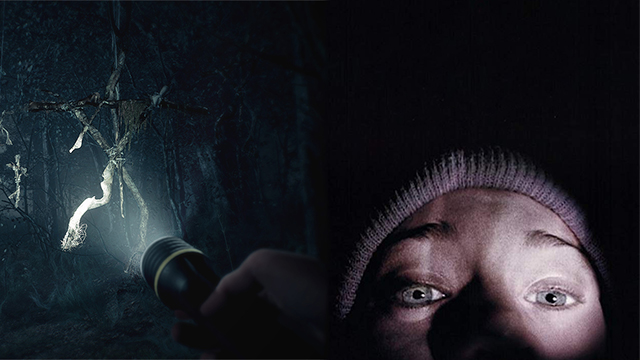The Blair Witch franchise hasn’t quite lived up to the legacy of the first film. Those following entries failed in a bunch of ways but mainly because they weren’t as true to The Blair Witch Project‘s strong horror fundamentals and overall novelty. Any piece of media bearing that Blair Witch name must cling to those ideals and that’s exactly what Bloober Team’s Blair Witch is trying to do. But you can’t just as copy and paste the foundation of one medium into another; you need to adapt them in a way that fits. And that seems quite a bit harder when you add a dog into a normally solitary experience. Barbara Kciuk, writer at Bloober, recently sat down with us to talk about making a true Blair Witch game while also speaking about the game’s shifting story, combat, and adorable — and very pettable — dog.
GameRevolution: This is obviously a horror game like your team’s other titles. What did you all learn from those games that could apply here?
Barbara Kciuk: We learned a lot. We decided that the ever-shifting reality and environment were what made our games stand out along with really making the player feel insecure about their surroundings. Like you can’t really ever trust your senses. For example, if you turn around, the corridor that you came from doesn’t exist anymore. So this is something we were really proud of in our previous games so this was something we wanted to carry on to our next games.
ALSO: Blair Witch might be the best entry in the franchise since the first film
But at the same time, we are always trying to do something new with each of our games. You need to innovate, especially in horror. In the end, just doing the same thing twice wouldn’t work because you don’t fall for the same trick twice. You need to keep them unnerved because if they feel too confident in what is about to happen, then you are just not scared. We want to innovate and still give you some more of the good stuff so it’s both what we’ve done before and new things.
GR: Layers of Fear and Observer aren’t licensed games but this is. How was working on a license and do you have plans or wishes to do more licensed work?
BK: I can’t talk about our [future] plans. But it has both its merits and challenges. It’s pretty cool because I didn’t think we would have a chance to work on such a legendary franchise. I was a great fan [back in the day] so for me, it’s an amazing opportunity. But in the end, it requires you to really think about what you are adding to this universe because if you add something that feels unnatural, it will break the immersion. Obviously, you can’t go overboard or do something totally crazy, which keeps you in check. But that is also important because you can focus more on what you really need to convey for your game but it also limits your possibilities. It’s both great fun and different. Working on both [original and licensed games] would probably be the most ideal for us.
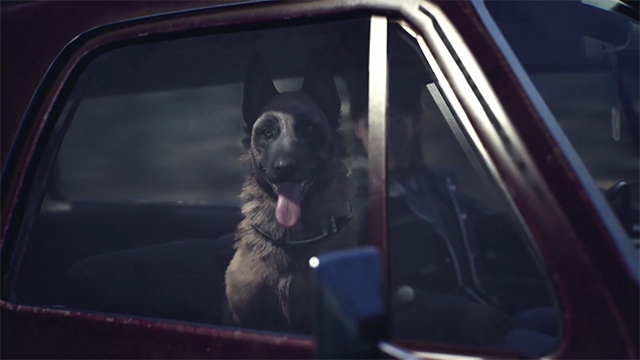
GR: There is a dog. He is very nice. You can pet him and that is great. How did the dog come into the game? Horror is usually a very solitary thing so you wouldn’t expect another being but he can’t talk so you’re still a little alone.
BK: It’s what you just said: the dog can’t talk. That was really important for us because we wanted to add another character for the player to connect with and that there is something you want to look after and take care of.
Blair Witch is always about a group of teenagers and there are always these moments of interactions with them that really establish the story that make us care about them because they are cool people and we want to see what happens to them. If something bad happens, it makes the story all the more involving.
So we were thinking about different creatures — humans or animals — that we could add. And we decided that the dog because the dog cannot talk. While you have this companion, you are not able to communicate with him clearly and there is still this separation and with a dog and you have a totally different skillset you can use in the game. It’s great because the dog can help you by sniffing things out and he can help solve the puzzles. And you need to work with this creature in order to achieve your goals because he can’t talk or communicate clearly so you have to pay attention to him and anticipate what he wants from you. It’s more involving because it’s cooperation instead of being a master of puppets with him being like “You go there, you go there.” It’s more of you two working together.
GR: I liked how he acted like a diegetic hint system that made sense.
BK: Yeah and one of the things is that the has a mind of his own and he will try to help you. Obviously, he will need your help but he will also be there to support you.

GR: It’s also great that you can pet him. How important was petting him?
BK: I would say petting is very important feature because if it wasn’t there, you would feel it. It’s so natural to interact with your pet in such a way that not giving you this idea would break the immersion. Immersion is when you just do what comes naturally. And when you can’t do something that is otherwise natural, you feel that it is lacking.
GR: You can scold him too so why would you ever want to do that?
BK: There are some behaviors that are being tracked and the game shapes its story based on what you are doing so scolding is also an important feature because Bullet’s behavior can be effected by this system. I’m not giving away too much because we don’t want the players to go after certain endings. It’s not as easy constantly pet him to maximize the points and you get the “good” ending.
GR: Yeah, you wouldn’t want players to pet him 100 times in the intro to lock down the good ending.
BK: No, it doesn’t work like that. It’s not like the [morality] bar gets full and it plays a certain ending. It’s more subtle and context based and more focused on behaving naturally and seeing what comes of it.
GR: Can you talk more about the branching story? How does that work?
BK: Aside from the fact that every story has an ending and there can be more than one ending, we also decided that we wanted to inject numerous subplots. For example, you may pick up the phone [when your wife is calling]. This is an example of one of the subplots that has its own ending and this ending also depends on how you behave. There’s a lot that can change. Every playthrough can give you different endings to different parts of the game.
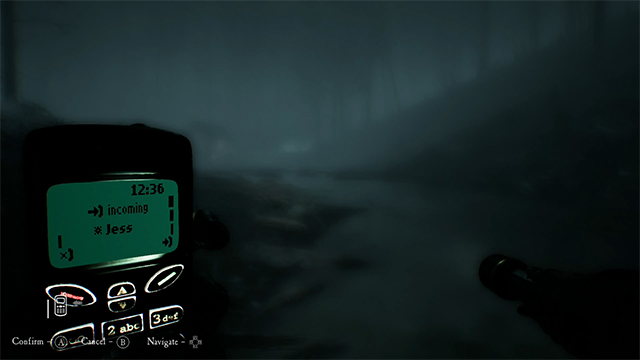
GR: I’m guessing that I could have also not picked up the phone.
BK: Yeah. Normally, you would consider [not picking up the phone] to be lost content but with this system, we are giving you some content to make up for it. If you didn’t pick up, we are giving you something else for that.
GR: Speaking of not seeing, you don’t actually see the Witch in the first movie. How did that menacing presence influence how the team built the game?
BK: Yes, in the movies you never see what is the real danger in the end [Editor’s note: you sort of see her in the most recent film]. You don’t even know if the Witch is even there. And this is something we want to carry on because we don’t want to make her one physical entity that you can go and fight with. We want to make it this overpowering force that can reshape your reality and there is not a real way to oppose her. You just struggle with everything and every way she manifests in.
GR: That mentality reminded me of a certain part where you can’t look at a creature in order to get past it. Was that from the same school of thought of hiding the dangerous monster?
BK: Yeah, exactly. This is one of the reasons why we decided to deal with the monsters in this way. Because in the end, what you don’t see is the scariest. Not really showing or explaining what is happening right in front of you can be scarier than showing it clearly.
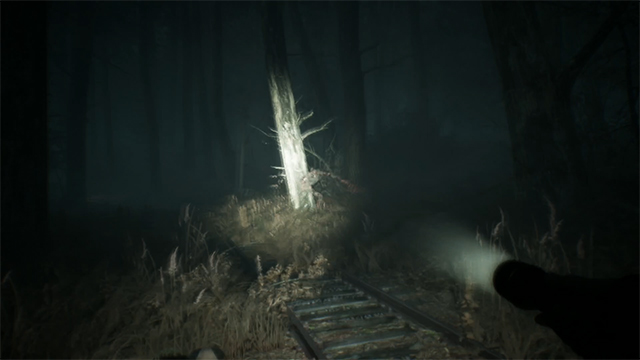
GR: There is some form of combat. Can you explain it a little more? Are they trying to get behind you to grab you? How are they scurrying about?
BK: With our previous games, we tried different approaches for foes. In Layers of Fear, we decided we didn’t really want the danger. With Observer, we tried the sneaking approach. And with Layers of Fear, we tried to run away from monsters. So this time we decided to be more combat focused. But in this forest, you can’t hope to kill your foes; you can only fend them off the creatures.
They are trying to get closer to you and when they are too close, they attack and you can die from it. This is an important factor because some of the fans from Layers of Fear expressed that not having a fail state made them feel like there is less at stake. So we decided that this time we will try to do it in such a way that there will be a fail state.
GR: It’s interesting because it relies on context clues like trees moving and the dog pointing instead of HUD markers.
BK: Yes, and it’s another way you need to cooperate with him. It is possible to do it without him but it’s another way to communicate with him.
GR: The camera is a good way to connect it to the most iconic part of the source material. How did you naturally bring it into the game without feeling forced?
BK: It’s all about improvising. We considered very different ways of using the camera. We looked at different games like Fatal Frame and Outlast; both different ways of doing it. But we never really found anything that would just feel natural for this universe and we didn’t want to copy something in the end. We wanted it to be something that would feel right for our game.
And we were doing different stuff with it and the first idea was obviously to play videos because [we could use it for] story parts. Like there are tapes with story relevance. We wanted to utilize first and foremost in a way to convey meaning. Then when we noticed that we could do something more to what you are seeing, we thought that we could do more with that. Because it feels natural to the universe because Blair Witch is about found footage. So [we thought] maybe this found footage could affect your environment somehow. Then we thought we could build some puzzles around it and then we managed to do that. And then if you look at the camera [while walking around], you can notice things on the camera that aren’t really there in the environment.
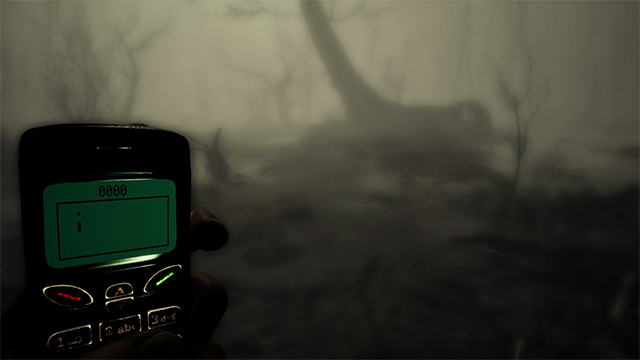
GR: The Snake game on the phone was neat by itself but it also helped set the game in the ‘90s. What else did you do to make it feel like it took place in that era?
BK: One of the reasons we chose the ‘90s was because the technology wasn’t as reliable as it is today. Like today, you can just use your smartphone and use your GPS [to find out where you are].
The Blair Witch [movie] from 2016 utilized [GPS] in a great way because they used drones and GPS to make you feel lost. But this was something we didn’t really want in our game. [This period also worked] because we are great fans of the ‘90s. It was our youth. There is a lot of fun to be had from creating something that you love. Creating Blair Witch is great because we love the franchise and recreating things that you remember from the ‘90s is also fun.
GR: So Snake was part of that?
BK: Yes! I remember playing Snake so much.
